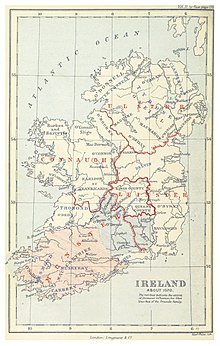Our website is made possible by displaying online advertisements to our visitors.
Please consider supporting us by disabling your ad blocker.
Desmond Rebellions
This article needs additional citations for verification. (January 2015) |


The Desmond Rebellions occurred in 1569–1573 and 1579–1583 in the Irish province of Munster. They were rebellions by the Earl of Desmond, the head of the FitzGerald dynasty in Munster, and his followers, the Geraldines and their allies, against the threat of the extension of the English government over the province. The rebellions were motivated primarily by the desire to maintain the independence of feudal lords from their monarch but also had an element of religious antagonism between Catholic Geraldines and the Protestant English state. They culminated in the destruction of the Desmond dynasty and the plantation or colonisation of Munster with English Protestant settlers. 'Desmond' is the Anglicisation of the Irish Deasmumhain, meaning 'South Munster'.
In addition to the scorched earth policy, Sir Humphrey Gilbert, Warham St Leger, Perrot and later Nicholas Malby and Lord Grey and William Pelham, deliberately targeted civilians, including women and children, the elderly or infirm or even those of diminished mental capacity regardless of whether they supported the Desmonds or not. It was considered a good policy to terrorise the native population. The American author Richard Berleth covers it in great detail in his book The Twilight Lords.
Previous Page Next Page


